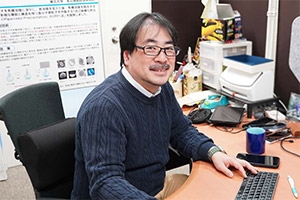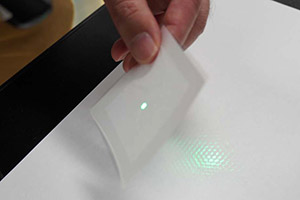

12/25/2023

Controlled oil–water separation is critical to solving problems concerning environmental contamination, water resource management, and industrial liquid separation. To this end, one approach focuses on the isolation of extremely thin membranes as the filtering medium.
“In conventional oil–water separation media, thicker membranes usually improve separation, because the mechanism relies on the adhesion of one of the liquids to the membrane surfaces,” says Hiroshi Yabu, the principal investigator of an AIMR research team. “In this work, we ask whether a lubricated thin membrane can be engineered to stop either oil or water from diffusing through—achieving separation.”
In a 2022 article, Yabu’s team used the breath-figure technique to fabricate single-layer (~10 µm) honeycomb porous polymer films1. Using ultraviolet-ozone treatment to change the surface compositions, the team was able to control the pore size and wettability of the thin films, inducing lubrication by either oil or water. The team further demonstrated that these micron-thick films are capable of performing milliliter-scale gravimetric oil–water separation.

“While previous reports used the membrane surface property itself (e.g., superhydrophobicity) to separate oil from water, we use the surface property to control which liquid fills the membrane to let that liquid through,” explains Yabu. “This approach significantly broadens the adaptability of the separation process using external stimuli such as the ultraviolet-ozone treatment.”
Earlier work by the same group had suggested the possible use of the honeycomb membrane in gas–liquid separation2 and in lithium–ion conductivity applications3. A future direction will use this technique to address PFAS (per- and polyfluoroalkyl substances) removal from water resources at large.
(Author: Patrick Han)
This research highlight has been approved by the authors of the original article and all information and data contained within has been provided by said authors.